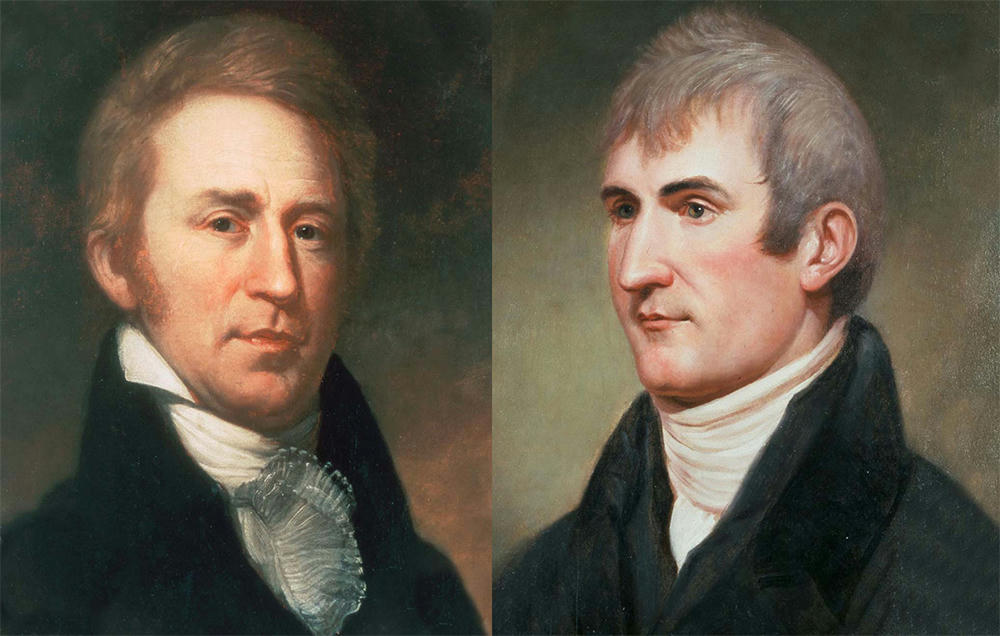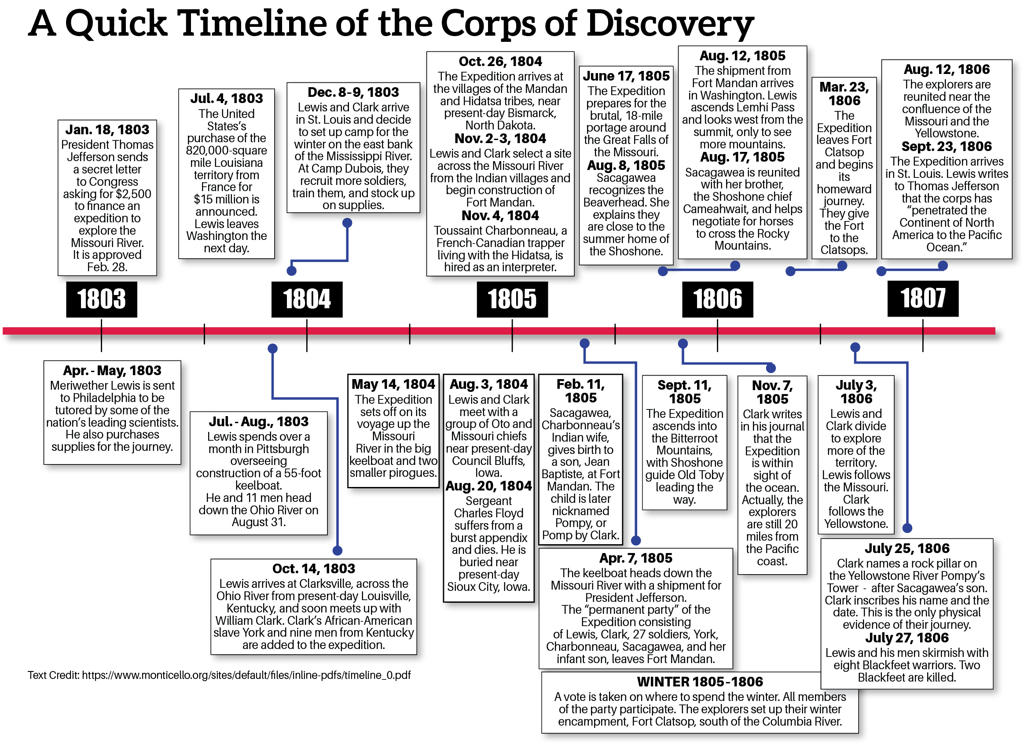|
Asignment Two The Lewis and Clark Expedition Deadline, March 18 or TBA, 120 points
Essential question How did the return of Lewis and Clark affect American interest in the West?
William Clark (left) and Meriwether Lewis (right)
Click on the above timeline to view an enlarged version.
Description The expedition of the Corps of Discovery by Lewis and Clark capitvated America, and built enormous interest in the lands included in the Louisiana Purchase. Thomas Jefferson was overjoyed by their return, and the men in the expedition received abundant rewards and cash from the United States government. York and Sacagawea received nothing. Still, interest in the West exploded and the explorations continued. Military officials had also sent Zebulon Pike to explore the Southwest. Though his expedition was not as well organized, or successful, as that of Lewis and Clark, he still provided important information for Americans as they moved west. Interest in the fur trade was also growing, and many trappers and traders soon followed the route explored by Lewis and Clark - at least to the upper Missouri. Relations with the Blackfeet were bad and traveling in northern and western of present-day Montana was dangerous - particularly for Americans. As a result of the danger of traveling among the Blackfeet and the horrific crossing of the Rockies described and mapped by Lewis and Clark, interest in a more southerly route to the Pacific Ocean started to grow. This led the wealthy eastern businessman, Jon Jacob Astor, to organize the first overland trade exploration to the Pacific Ocen. Unlike Lewis and Clark, the Astorians did not intend to follow the Missouri to its western extent. They looked for an overland route south of what Lewis and Clark had found. The Astorians were the first white explorers to find a wide basin at the southern end of the Wind River Mountains. This was where the Rockies could be crossed with a great deal more ease than the near deadly route Lewis and Clark had followed through what is now north-central Idaho. The discovery by the Astorians became the fabled South Pass. And it was the route through which the vast majority of westward travelers would move west. Objectives Students will identify and explain the impacts of the Lewis and Clark expedition and the increased interest in the West that followed prior to the War of 1812. Special instructions Use the textook Chapter 15, pages 25 to the end Chapter 16, pages 19 to 25 as you answer the following questions with a clear response of a few sentences.
|
|
Links you will use with this assignment A copy of the assignment Click here to view a printed copy of this assignment. Other online files Click here to view an enlarged copy of the quick timeline of the Lewis and Clark expedition. Textbook, Chapter 15 Textbook, Chapter 16 Click here to open Lewis and Clark, choosing where to winter 1805-1806. The Lewis and Clark video we used in class is copyright material. I do not know of a location on the web where it can be accessed for free. I believe it can be purchased at this link. It is available on Amazon Prime at this link. Click here to view the interactive link about sites along the Lewis and Clark trail. Note >> You do not need to do just Pompey's Pillar. Look at the map on the left side of the page.
|

